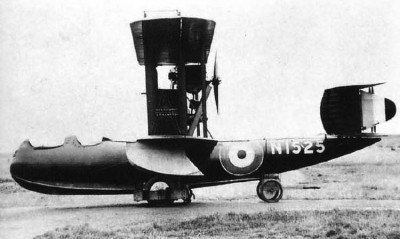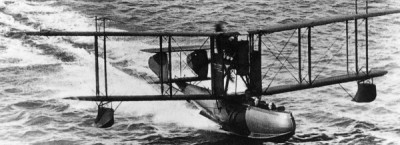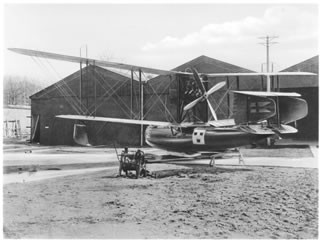| Název: Name: | AD Flying Boat | AD Flying Boat |
| Originální název: Original Name: | AD Flying Boat | |
| Kategorie: Category: | průzkumný/pozorovací letoun | reconnaissance/scout aeroplane |
| Výrobce: Producer: | DD.MM.1916-DD.MM.191R Pemberton-Billing Ltd., Woolston | |
| Období výroby: Production Period: | DD.MM.1916-DD.MM.191R | |
| Vyrobeno kusů: Number of Produced: | 29 (1412, 1413, N1290, N1520/1529, N1710/1719, N2450/2455) | |
| První vzlet: Maiden Flight: | DD.MM.1917 | |
| Osádka: Crew: | 2 | |
| Základní charakteristika: Basic Characteristics: | ||
| Vzlet a přistání: Take-off and Landing: | CTOL - konvenční vzlet a přistání | CTOL - conventional take-off and landing |
| Uspořádání křídla: Arrangement of Wing: | dvouplošník | biplane |
| Uspořádání letounu: Aircraft Concept: | klasické | conventional |
| Podvozek: Undercarriage: | pevný | fixed |
| Přistávací zařízení: Landing Gear: | člunový trup | flying boat |
| Technické údaje: Technical Data: | ||
| Hmotnost prázdného letounu: Empty Weight: | 1138 kg | 2508 lb |
| Vzletová hmotnost: Take-off Weight: | 1618 kg | 3567 lb |
| Maximální vzletová hmotnost: Maximum Take-off Weight: | ? kg | ? lb |
| Rozpětí: Wingspan: | 15.34 m | 50ft 4in |
| Délka: Length: | 9.32 m | 30ft 7in |
| Výška: Height: | 3.99 m | 13ft 1in |
| Plocha křídla: Wing Area: | 44.5 m2 | 479 ft2 |
| Plošné zatížení: Wing Loading: | ? kg/m2 | ? lb/ft2 |
| Pohon: Propulsion: | ||
| Kategorie: Category: | pístový | piston |
| Počet motorů: Number of Engines: | 1 | |
| Typ: Type: | Hispano-Suiza o výkonu 119 kW nebo Hispano-Suiza o výkonu 149 kW dvoulistá vrtule | Hispano-Suiza, power 160 hp or Hispano-Suiza, power 200 hp two-blade propeller |
| Objem palivových nádrží: Fuel Tank Capacity: | ? | ? |
| Výkony: Performance: | ||
| Maximální rychlost: Maximum Speed: | 160.9 1) km/h v 610 m | 1001) mph in 2000 ft |
| Cestovní rychlost: Cruise Speed: | ? km/h v ? m | ? mph in ? ft |
| Rychlost stoupání: Climb Rate: | ? m/s | ? ft/min |
| Čas výstupu na výšku: Time to Climb to: | 30 min do 3048 m | 30 min to 10000 ft |
| Operační dostup: Service Ceiling: | 3353 m | 11000 ft |
| Dolet: Range: | ? km | ? mi |
| Maximální dolet: Maximum Range: | ? km | ? mi |
| Výzbroj: Armament: | 1x pohyblivý z,7mm kulomet Lewis | 1x flexible .303 Lewis machine gun |
| Uživatelské státy: User States: | | |
| Poznámka: Note: | 1) Channel Mk.II s 179kW motorem Armstrong Siddeley Puma 148 km/h | 1) Channel Mk.II with Armstrong Siddeley Puma engine 92 mph |
| Zdroje: Sources: | Thetford, Owen. British Naval Aircraft since 1912. Naval Institute Press, Annopolis 1991, ISBN 1-55750-076-2. http://www.airwar.ru/enc/flyboat/adflyingboat.html http://en.wikipedia.org/wiki/AD_Flying_Boat http://sv.wikipedia.org/wiki/Supermarine_Channel http://www.airwar.ru/enc/flyboat/adflyingboat.html | |
| Period | World War One / The Great War [1914-1918] |
| Producer | - |
| Type | AD Flying Boat |
| Camouflage | Standardní vojenská |
 Plátno / Fabric Plátno / Fabric Dřevo / Wood Dřevo / Wood Kov, stříbrná / Metalic, silver Kov, stříbrná / Metalic, silver |
|
| Country |  |
| Pilot | - |
| Production No. | - |
| Serial No. / Evidence No. | N1525 |
| Tactical Marking / Imatriculation | - |
| Name | - |
| Unit | - |
| Base | - |
| Date (DD.MM.RRRR) | DD.MM.RRRR |
| Author | - |
| Print size / 300 DPI | - |
| Published with authors permit | - |
| Author Website | - |


